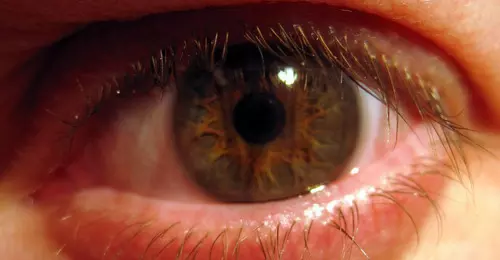Calcium hydroxyapatite injection may correct orbital volume deficit with post enucleation socket syndrome: Study

Injectable calcium hydroxyapatite (CAHY) has emerged as a promising option for correcting orbital volume deficit in post enucleation socket syndrome. However, data on its long-term efficacy and safety are limited. A recent observational study aimed to evaluate the 10-year outcomes of injectable CAHY for orbital volume augmentation.
Postenucleation socket syndrome often leads to enophthalmos, causing functional and cosmetic concerns for patients. Injectable CAHY offers a minimally invasive approach to address this issue, but its durability and persistence over time have not been extensively studied. This study was published in the journal Ophthalmic Plastic and Reconstructive Surgery by Di Maria and colleagues.
The study conducted a clinical review of 31 patients with post enucleation socket syndrome who underwent injectable CAHY placement for orbital volume augmentation. Patients were followed up for 10 years, and the amount of CAHY injected was tailored to the degree of orbital volume deficit. Patients with previous radiotherapy or inadequate conjunctival fornix were excluded.
The key findings of the study were:
-
Patients demonstrated a mean increase in orbital volume of 3.35 ± 0.91 at 6 months and 2.97 ± 1.35 at 10 years post-injection.
-
The mean follow-up duration was 219 ± 18 months, with clinical and cosmetic improvement observed to persist for 10 years.
-
Complications were minimal, including peribulbar ecchymosis, two cases of extrusions of the internal prosthesis, and two cases of ptosis.
-
The study highlights the long-term efficacy and safety of injectable CAHY for correcting orbital volume deficit in post enucleation socket syndrome.
-
The sustained improvement observed over 10 years, along with minimal complications, underscores the reliability of this technique.
Injectable CAHY emerges as a safe, simple, and cost-effective option for treating orbital volume deficiency in post enucleation socket syndrome. Its semi permanent nature and negligible volume loss over 10 years make it a promising solution for patients seeking lasting cosmetic improvement. Further research and larger studies are warranted to validate these findings and optimise treatment protocols.
Reference:
Di Maria, A., Ferraro, V., Trenti, N., Morenghi, E., Gaeta, A., Vinciguerra, P., & Confalonieri, F. Ten-year follow-up of orbital volume augmentation with calcium hydroxyapatite filler in postenucleation socket syndrome. Ophthalmic Plastic and Reconstructive Surgery,2024;40(1):49–54. https://doi.org/10.1097/iop.0000000000002500
